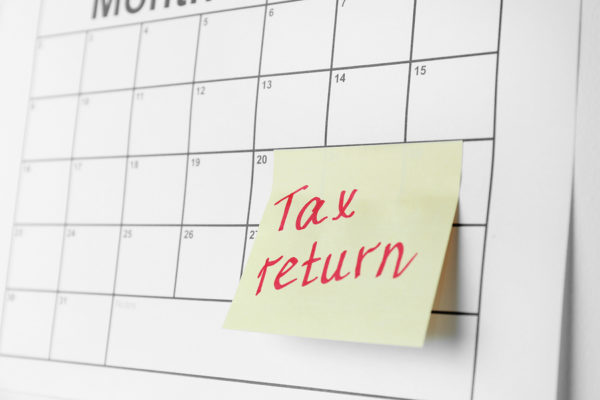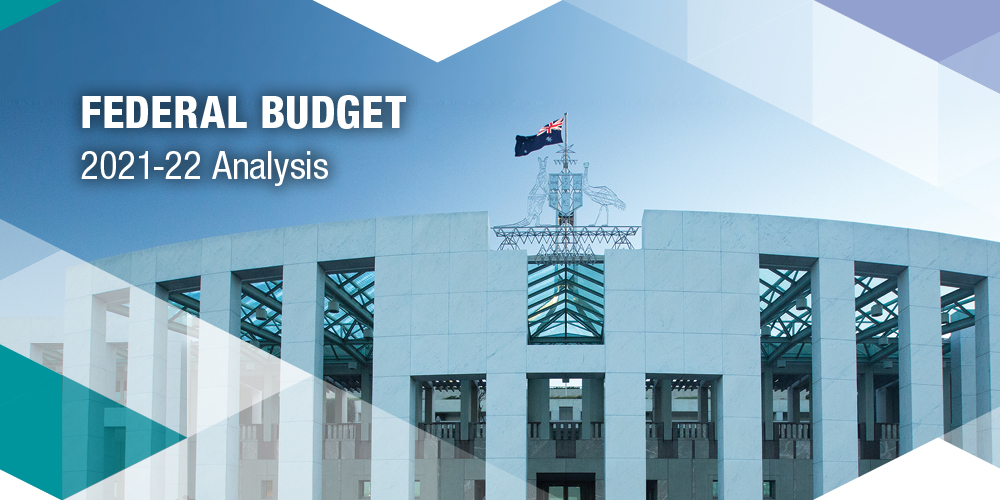
A balancing act Billed as a Budget for families with a focus on relieving short-term cost of living pressures, Treasurer Josh Frydenberg’s fourth Budget also has one eye firmly on the federal election in May.

A balancing act Billed as a Budget for families with a focus on relieving short-term cost of living pressures, Treasurer Josh Frydenberg’s fourth Budget also has one eye firmly on the federal election in May.

Some of the last sitting days before this year’s Federal election saw changes to the tax and super rules finally pass through both houses of Parliament. Here’s a roundup of some of the key developments.

It seems like June 30 rolls around quicker every year, so why wait until the last minute to get your finances in order?

The Government is continuing to tighten the eligibility rules for claiming tax concessions relating to small business capital gains tax (CGT) obligations.
If you qualify, these concessions can have a big impact on how much of the profit from the sale of a business asset you get to keep, and how much goes to the taxman.
Given the generous nature of the concessions, the ATO is keen to ensure they are used appropriately.
Selling an income-producing asset such as property, business equipment or shares at a profit, will create an assessable capital gain. This capital gain is then used to calculate your CGT obligation, which forms part of your annual income tax bill.
Business owners are permitted to use several tax concessions to reduce their CGT obligation, but the eligibility rules can be tricky to navigate.
A new tax determination (TD 2021/2) has further tightened them by clarifying that companies carrying on a business whose only activity is renting out an investment property are not eligible to claim the CGT concessions when the property is sold.
Although this ruling is a big loss for some property investors, it’s worth remembering that if you do qualify, these concessions can substantially reduce – or even eliminate – the CGT payable on the sale of business assets.
The four small business CGT concessions are in addition to the normal 50 per cent general discount on CGT applying when you have owned an asset for more than 12 months.
Generally, the concessions apply to any asset your business owns and eventually sells at a profit, provided your annual turnover is under $2 million.
The four small business CGT concessions are:
If your business turnover is over $2 million but under $10 million, you may be able to use the small business restructure rollover concession. This permits the transfer of active assets – including CGT assets, trading stock and depreciating assets – from one business entity to another without incurring an income tax liability.
You can apply for as many of the four special CGT concessions as you are entitled to. In some situations, this can reduce your capital gain to zero. Before applying, you need to meet the basic eligibility conditions for the CGT concessions.
As the release of TD 2021/2 shows, the government regularly tightens the eligibility criteria for these concessions, so if you plan to take advantage of them, ensure you check the qualifying requirements carefully – or speak to us – as the process is quite complex.
Put simply, you must satisfy four basic conditions applying to all the concessions and then check if you meet the additional eligibility rules applying to each CGT concession.
The first condition requires you to be either a small business entity (SBE) with an aggregated turnover of less than $2 million; not carrying on a business but have a ‘passively-held asset’ used in the business as a connected entity; a partner in an SBE partnership; or satisfy the maximum net asset value ($6 million) test.
In addition, the business asset you are disposing of must satisfy the active asset test. If the asset is a share in a company or an interest in a trust, it must meet additional conditions.
The final step covers assets related to membership interests in a partnership. Each step must be considered in the set order before moving to the eligibility criteria for the individual concessions.
If you would like more information about the tax implications surrounding the disposal of your business assets, call us today.
The tough trading conditions resulting from COVID-19 mean Nasir has decided to downsize his trucking business. He sells an active asset, which is a haulage vehicle he has owned for four years. As a result, he makes a capital gain of $80,000.
At the same time, he makes a separate capital loss of $10,000 when he sells another smaller piece of equipment.
As Nasir satisfies all the eligibility conditions for the normal CGT discount and the small business 50% active asset reduction concession, his capital gain position for these assets is:
| Capital gain | $80,000 |
| Capital loss | $10,000 |
| Take the capital loss away from the capital gain | $70,000 |
| Apply 50% CGT discount ($70,000 x 50%) to the remaining capital gain | $35,000 |
| Apply 50% small business active asset reduction ($35,000 x 50%) to the remaining capital gain | $17,500 |
| Reduced capital gain | $17,500 |
Nasir may be able to further reduce his $17,500 (reduced) capital gain if he satisfies the conditions applying to both the small business retirement exemption and the rollover concession.
* This case study is for illustrative purposes only. Please seek advice for your specific circumstances.

Unsure how your relationship status affects your taxes? We’ve made it simple with our couple’s guide to tax.
If you’re newly married, engaged or living with your partner, you might not be aware that there are some implications for your taxes.
In Australia, you’re not required to lodge a combined tax return with your spouse each year. Instead, you need to declare your spouse’s taxable income on your individual tax return.
The Australian Taxation Office (ATO) uses your joint income to work out whether:
So, first things first, how do you know if you have a ‘spouse’ in the ATO’s eyes?
Do I have a spouse or de facto partner?
As far as the ATO is concerned, your spouse “includes another person (of any sex) who:
You must declare all of the taxable income your spouse receives in your return, including:
How does this affect my tax return?
There are some implications for your taxes, especially in the following areas.
Private health insurance rebate
The amount of rebate you qualify for is based on your income, so you might receive a different level of rebate as a couple than you did as an individual. You can check the rebate rates and income thresholds here.
Medicare levy surcharge
High-income earners who don’t have private patient hospital cover are charged a Medicare levy surcharge.
If you have a spouse, the ATO will use your combined income to work out your Medicare levy surcharge. It’s calculated as a percentage of your income (up to 1.5%) and is payable in addition to the Medicare Levy.
You may need to pay the Medicare levy surcharge if you don’t have private patient hospital cover and your income is over:
If you’ve recently gained a spouse for tax purposes, and you don’t have private patient hospital cover, make sure to check whether your combined income puts you over the income threshold. Taking out private patient hospital cover will mean you don’t need to pay the surcharge – and you’ll be covered in case of an emergency.
Medicare levy reduction
There’s also a Medicare levy reduction available to low-income earners. If you have a spouse and your family taxable income is equal to or less than $48,092, you might be eligible for a reduction.
Combining your homes?
Something that’s often overlooked when moving in with a spouse is the way it affects the capital gains tax (CGT) exemption on your main residence. If you both owned and lived in your own homes before moving in together; or you’re in an established relationship but lived separately during the year; and you plan to sell one or both of the properties, there could be CGT implications. Working out your CGT obligations can be tricky, so seek advice from a tax professional when preparing your return.
If you’re still not sure whether you need to include your spouse’s details on your return, seek advice from a tax agent or speak to the ATO. If you leave your spouse out, the ATO could amend your tax return and there could even be financial penalties.
Need help? Please reach out to the Sherlock Wealth team here to help you look at what’s right for you.
Source: Money and Life
(Financial Planning Association of Australia)

The principle of ‘salary sacrificing’ may not sound very appealing. After all, who in their right mind would voluntarily give up their hard-earned cash. But it can have real financial benefits for some in terms of reducing your taxable income, which could see you pay less at tax time.
As we nudge ever closer to the end of the financial year, it’s worth taking a look at salary sacrificing to see if it’s a worthwhile strategy to put into place for you.
A salary sacrifice arrangement is also commonly referred to as salary packaging or total remuneration packaging. In essence, a salary sacrifice arrangement is when you agree to receive less income before tax, in return for your employer providing you with benefits of similar value. You’re basically using your pre-tax salary to buy something you would normally purchase with your after-tax pay.
The main benefit of salary sacrificing is that it reduces your pre-tax income, and therefore the amount of tax you must pay. For example, if you’re on a $100,000 income, you may agree to only receive $75,000 as income in return for a $25,000 car as a benefit.
Doing this would reduce your taxable income to $75,000 which could lower your tax bill because you’re essentially earning less as far as the tax office is concerned.*
This arrangement must be set up in advance with your employer before you commence the work that you’ll be paid for and it’s advisable that the details of the agreement are outlined in writing.
According to the Australian Tax Office (ATO), there’s no restriction on the types of benefits you can sacrifice, as long as the benefits form part of your remuneration. What you can salary sacrifice may also depend on what your employer offers.
The types of benefits provided in a salary sacrifice arrangement include fringe benefits, exempt benefits and superannuation.
Fringe benefits can include:
Your employer pays fringe benefit tax (FBT) on these benefits.
Exempt benefits include work-related items such as:
Your employer typically does not have to pay fringe benefits tax on these.
You can also ask your employer to pay part of your pre-tax salary into your superannuation account. This is on top of the contributions your employer is already paying you under the Superannuation Guarantee, which should be no less than 9.5% of your gross (before tax) annual salary, though this may rise in the near future.
Salary sacrificed super contributions are classified as employer super contributions rather than employee contributions. These contributions are called concessional contributions and are taxed at 15 per cent. For most people, this will be lower than their marginal tax rate.
There is a limit as to how much extra you can contribute to your super per year at the 15 per cent tax rate. The combined total of your employer and any salary sacrificed concessional contributions cannot exceed $25,000 in a single financial year. If you exceed the cap, you could be charged additional tax on any excess salary sacrifice contributions.
Most employers allow employees to salary sacrifice in super, but not all employers will allow salary sacrificing for other benefits.
Salary sacrifice is generally most effective for middle to high-income earners, while there is little to no tax saving for people who are already in a low tax bracket.
If you are a middle to high-income earner, then it may be worth considering salary sacrifice to reduce your taxable income and to take advantage of some of those benefits.
Before you do, make sure you talk to us so we can help ensure it is an appropriate strategy for your circumstances.
*Note: This example illustrates how salary sacrifice arrangements can work and does not constitute advice. You should not act solely on the information in this example.
Source for all information in this article: https://www.ato.gov.au/General/Fringe-benefits-tax-(FBT)/Salary-sacrifice-arrangements/

Investing in recovery In his third and possibly last Budget before the next federal election,…

Australians are generous when it comes to opening their wallet for a good cause. But you may have reached a point in life where you want to make a more substantial contribution with control over how your money is spent. You may also wish to get your children involved to instil shared values.
While it hasn’t received much publicity, increasing numbers of Australians are using charitable trusts to give in a more planned and tax-effective way.
The turning point came in 2001 when the Howard Government introduced the Private Ancillary Fund (PAF) with the aim of encouraging more individual and corporate philanthropy. PAFs are charitable trusts that can be used by an individual or family for strategic long-term giving.
Since then, the number of PAFs and the amount of money contained in them has grown steadily. In early 2018, JB Were reported that there were 1600 PAFs, housing $10 billion and distributing $500 million a year.i
According to Philanthropy Australia, in the 2015-2016 financial year 14.9 million Australians collectively donated $12.5 billion to charities and not-for-profits (NFPs).ii The median donation was $200 and 4.51 million taxpayers claimed for a ‘deductible gift’ on their tax return, highlighting that you don’t have to be wealthy to live generously.
Though donations to appropriately accredited charities and not-for-profits are tax-deductible, the figures indicate two-thirds of taxpayers don’t bother to claim. It’s well worth keeping track of receipts so you can claim when you think that, for example, a single donation of $5000 to a charity or NFP in a financial year will reduce your taxable income by $5000.
A core principle of tax-deductible philanthropy is that the giver shouldn’t stand to receive any material benefit. For example, if you buy tickets in a raffle run by a charity you can’t claim a tax deduction on the cost of the tickets. In order to receive a tax deduction for your donation, the recipient must also be registered as a deductible gift recipient (DGR).
There are many ways to be charitable but the impact on your tax bill will vary depending on how you go about it.
These days, people who want to take philanthropy to the next level with an ongoing, tax-effective approach have a variety of trusts to choose from.
PAFs are the best-known of the new breed of trusts. The money placed in a PAF is tax-deductible and assets in the fund aren’t subject to income or capital gains tax (but do qualify for franking credits).
Let’s say a dentist sets up a PAF and gifts half his $500,000 annual income into the fund where it’s invested in a diversified portfolio. The dentist’s taxable income now drops to $250,000. What’s more, no tax is paid on the returns made on the $250,000 that has been invested in the PAF. The dentist has to distribute a minimum of five per cent of their PAF’s net asset value annually, or a minimum of $11,000. After meeting that requirement, the dentist has a relatively free hand about which charities to support and how much they receive.
The Public Ancillary Fund (PuAF)
PuAFs work the same way as PAFs but operate on a larger scale. For example, 10 dentists may set up a PuAF to finance the building of dental hospitals in Africa. As well as gifting part of their incomes, the 10 dentists can (in fact, are obliged to) invite the general public to make tax-deductible donations to their PuAF.
Testamentary Trust (or Will Trust)
These are used by individuals wanting to leave money in their will to a specified charitable purpose. The two advantages of this type of trust are that the trustee(s) can distribute the income generated by the trust in a way that minimises the tax burden of beneficiaries, and the assets in the trust can’t be accessed by parties such as creditors and the divorcing partners of a beneficiary.
Like many parts of the economy, the charity sector has been ‘disrupted’ in recent years, with a stronger focus on donor engagement.
Organisations such as Effective Philanthropy and Effective Altruism have emerged to analyse how the charity dollar can be best spent. While crowdfunding platforms such as GoFundMe have emerged to facilitate, for example, the funding of individual medical procedures.
As a result, many philanthropists have gone from simply writing cheques to directing – or at least monitoring – how their money is spent.
Your contribution is most likely to be well spent if you donate it to an organisation that defines its mission clearly, has measurable goals, can demonstrate concrete achievements and is transparent about its finances (e.g. has annual reports available on its website).
Few people give to get a tax deduction but by supporting good causes in a tax-effective manner you can achieve a bigger bang for your philanthropic buck. If you would like to know more about tax-effective giving, give us a call.
| Some examples of philanthropists making their mark | ||
| James & Gretel Packer |
National Philanthropic Fund (2014-) |
$200 million to the arts and Indigenous education by 2024 |
| Paul Ramsay | Paul Ramsay Foundation (2014-) |
$3 billion to improve health and education outcomes for Australians |
| Andrew Forrest & his wife Nicola | Minderoo Foundation (2001-) |
$645 million to drive social change encompassing education, research and Indigenous affairs |
| ‘Pokies King’ Len Ainsworth | ‘Giving Pledge’ (2017-) |
$500 million to support primarily medical and health-related charities |
Are you interested in creating a PAF to support your charity contributions, reach out to the Sherlock Wealth team to discuss your unique situation here
i https://www.strategicgrants.com.au/au/free-resources/blog/19-blog-kate/280-grantseeking-donor-giving
ii http://www.philanthropy.org.au/tools-resources/fast-facts-and-stats/

Tax planning can feel stressful at the best of times. However, when it’s tax time, paying close attention to allowable deductions may lower the tax you need to pay on your tax return. Here are some allowable deductions you may wish to consider when preparing your next return.
While every person’s financial circumstances are unique, it can be helpful to be aware of some of the different deductions that may apply when you are next doing your tax planning.
Hiring a registered tax agent to lodge your tax return is a great way of organising your finances, however, sometimes it can be expensive. The good news is that you may be able to deduct any fee you incur for your agent to prepare or lodge your tax return in the next financial year.
When you next make a donation, check if the organisation is a deductible gift recipient (DGR) and the amount is over $2. If so, then you may be able to claim any donations you have made as a tax deduction. To qualify, the donations must have been made with nothing received or expected to be received in return and be recorded with a receipt.
Generally, premiums paid by Australian resident individuals for income protection insurance under a policy they own may be claimed as a tax deduction to the extent that the premiums are paid for benefits that are designed to replace the individual’s lost income. If you claim on your income protection policy, any income replacement benefits received are generally assessable as income and liable for income tax just like your regular income.
If you are completing any courses that relate to your current job, lead to formal qualifications, improve your skills or knowledge and are likely to lead to increased income, then these course fees may be deductible. Any other costs associated with undertaking the course may also be deductible such as textbooks, student service fees and travel between home or work and the place of education.
With many people’s working arrangements changing due to COVID-19, the ATO has created a shortcut method to help calculate deductions when working from home. You can claim your working from home expenses for the period between 1 March 2020 to 30 June 2020 in the 2019-20 income year and 1 July 2020 to 30 September 2020 in the 2020-21 income year if certain conditions are met. The deduction which can be claimed is 80 cents for every hour you worked in the 1 March – 30 June 2020 period and applies to electricity expenses, cleaning expenses, internet costs and computer consumables.
Certain job-specific purchases can be valid tax deductions. For example, if your job requires you to spend time outside on a daily basis then you may be able to claim a deduction for sunscreen costs. You may be able to claim a deduction for a handbag or satchel you buy to carry items for work purposes such as laptops, tablets or work papers. The amount of the deduction depends on the extent you use the bag for work purposes. You can find out more information on the ATO website.
Your life is unique and so are your personal finances which is why your tax planning is so important. There is no one-size-fits-all approach, so you should take into consideration your individual circumstances when preparing and lodging your tax return and seek expert advice.
Speak with Sherlock Wealth for help with information on tax planning and preparation to help plan for your financial goals and future. If you’re looking for guidance with financial planning, get in touch here.
NOTE: All information refers to Australian resident individual taxpayers and has been informed by the Australian Tax Office website.
Information was correct at the time of writing (July 2020) but may be subject to change.
Information provided in respect of taxation law is given in good faith and for the general information purposes of Australian tax residents only. It is believed to be accurate as at July 2020 but may be subject to change. As the application of tax law depends on each person’s individual circumstances, you should always seek advice from a qualified tax professional.

For the second time in 2022, the government of the day has delivered a Federal Budget. Last night’s Budget was the first delivered by the new Labor government that was elected in May 2022.
Given the present state of the economy post-COVID, a worsening economic position due to inflation and increased global instability, rising interest rates and cost of living pressures, the Budget was conservative by nature. There were no big surprises… Download our full analysis!
Disclosure: This information is intended to provide general information only and has been prepared without considering any particular person’s objectives, financial situation and needs (‘your circumstances’). Before acting on such information, you should consider the appropriateness of the information regarding your circumstances.